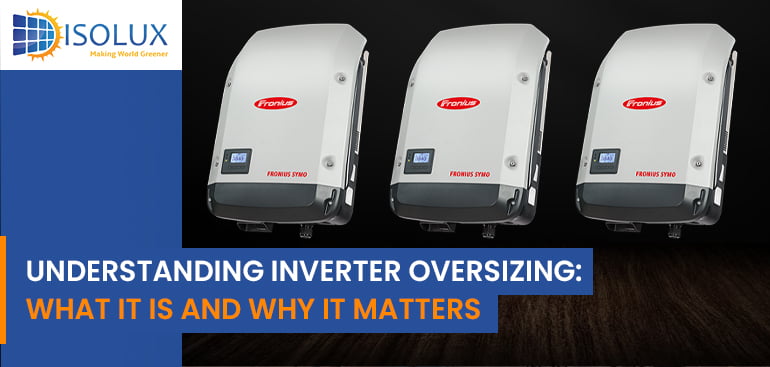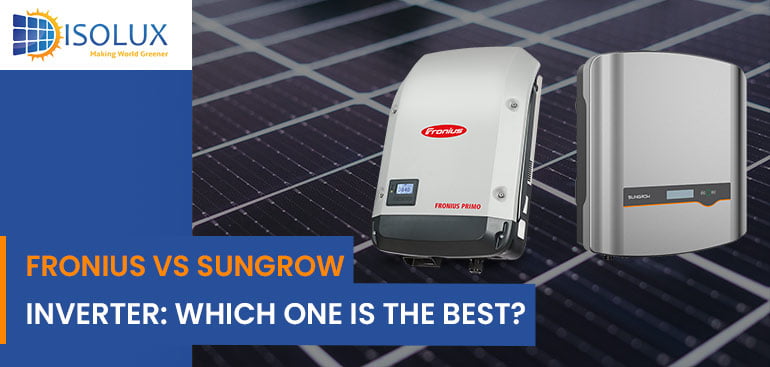If you’re considering installing a solar energy system, you’ve likely come across the term “inverter oversizing.” But what exactly does it mean, and how does it impact your system’s performance? In simple terms, inverter oversizing is a technique used by solar system designers to maximize energy yields and optimize system efficiency.
What is Inverter Oversizing?
Inverter oversizing refers to the practice of selecting an inverter with a higher capacity rating than the system’s maximum DC power output. In other words, it involves pairing a larger inverter with a smaller solar panel array. This technique is used to increase the amount of energy that a solar system can produce under certain conditions, such as low light or partial shading. Inverter oversizing is a popular strategy because it allows system designers to achieve higher energy yields without adding additional solar panels.
What is a Solar Array?
A solar array is a collection of solar panels that are interconnected and mounted on a support structure, such as a rooftop or ground-mounted rack. The solar panels in a solar array work together to convert sunlight into electricity, which can then be used to power homes, businesses, or other electrical loads. Solar arrays can range in size from small residential systems to large-scale commercial or utility-scale installations and can be designed to meet a variety of energy needs. Overall, solar arrays are an important component of the growing renewable energy industry, offering a clean and sustainable source of electricity.
You May Like: Solar Panel Array Oversizing
How to Oversize an Inverter
Oversizing an inverter requires careful planning and consideration. The following steps can help ensure a successful oversizing installation:
1. Determine the Maximum Inverter Capacity
Before oversizing, it is essential to determine the maximum capacity of the inverter that can be installed. The maximum capacity will depend on the rating of the solar panels and the local regulations governing the installation of solar systems.
2. Calculate the Optimal Inverter Capacity
To calculate the optimal inverter capacity, it is necessary to consider the maximum capacity, the solar panel rating, and the expected energy production of the solar system. The optimal inverter capacity should be based on the expected energy production during periods of low solar radiation.
3. Choose the Right Inverter
When oversizing an inverter, it is crucial to choose the right inverter for the solar system. The inverter should be compatible with the solar panels and should have the necessary features and capabilities to handle the additional capacity.
Why Should We Oversize Solar Inverters?
There are several reasons why solar system designers may choose to oversize inverters:
Increased Energy Yields: Oversizing the inverter allows the solar panel array to operate at a higher voltage, which can result in higher energy yields, particularly in low light or partially shaded conditions.
Improved Efficiency: It will help to reduce system losses and improve overall system efficiency, which can translate into greater cost savings over the lifetime of the system.
Cost Savings: Oversizing the inverter can allow for a smaller solar panel array to be used, reducing the overall cost of the system. This is particularly beneficial in cases where space is limited or where there are constraints on the size of the solar panel array.
Increased Flexibility: It will provide greater flexibility in system design, allowing for easier integration with existing electrical infrastructure and reducing the need for additional components.
Is it Safe to Oversize Solar Inverters?
While oversizing solar inverters can offer benefits in terms of energy output and system efficiency, it’s important to ensure that the oversizing is done in a safe and appropriate manner.
When oversizing inverters, it’s important to consider the maximum power rating of the inverter, as well as the maximum power output of the solar panel array. Oversizing the inverter beyond the maximum power rating can lead to decreased performance, reduced lifespan of the inverter, and potential damage to other system components. Additionally, oversizing the inverter can result in increased heat generation, which can impact the reliability and safety of the system.
To ensure the safe and effective use of oversizing, it’s recommended to work with a qualified solar system designer who can help to determine the appropriate inverter size for your specific system. This may involve a detailed analysis of the solar panel array, as well as consideration of local environmental factors, electrical load requirements, and other system design factors.
Impact of Inverter Oversizing
While oversizing an inverter can have many benefits, it can also have some drawbacks. The following are some of the potential impacts of oversizing:
1. Reduced Efficiency
If the inverter is oversized too much, it can reduce the overall efficiency of the solar system. This is because the inverter may not be able to convert the available energy efficiently, which can lead to losses and reduced energy production.
2. Warranty Issues
Oversizing also leads to warranty issues. If the inverter is oversized beyond the manufacturer’s specifications, it may void the warranty and leave the solar system without any protection.
3. Safety Concerns
You can also pose safety concerns. If the inverter is not installed correctly or is oversized beyond the capacity of the electrical system, it can pose a fire risk or other safety hazards.
Conclusion:
Oversizing an inverter can provide many benefits to a solar system, including increased energy production, cost savings, and improved performance. However, it is essential to carefully plan and consider the installation to ensure a successful and safe outcome. By following the steps outlined in this blog, you can oversize your inverter safely and effectively. Remember to choose the right inverter, calculate the optimal capacity, and adhere to local regulations to ensure a successful oversizing installation.
Get a free quote from a local solar installer to install a solar panel system with a battery and inverter.
Read Next Blog:
Importance of Selecting a Local Solar Installer
FAQs:
Q. Is inverter oversizing right for every solar system?
A. Inverter oversizing may not be the best strategy for every solar system. It’s important to consult with a qualified solar system designer to determine the optimal inverter size for your specific system.
Q. Can inverter oversizing cause damage to the system?
A. Inverter oversizing can be a safe and effective strategy when implemented correctly. However, it’s important to work with a qualified solar system designer to ensure that the system is designed and installed to industry standards.
Q. Will inverter oversizing impact the warranty of my solar system components?
A. Inverter oversizing may impact the warranty of your solar system components, depending on the manufacturer’s terms and conditions. It’s important to review the warranty information for your specific components before implementing an oversizing strategy.




